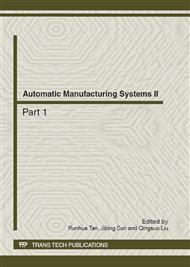p.1434
p.1438
p.1443
p.1447
p.1451
p.1455
p.1459
p.1463
p.1467
Ontology-Driven Requirements Elicitation Based on Scenario
Abstract:
For the completeness and accuracy of customers' requirements information in the mass customization paradigm, a method of ontology-driven personal requirements elicitation based on scenario was proposed. Firstly, customer scenario model and product requirements model based on ontology theory were constructed respectively. Association rules were mined with Apriori algorithm using the method of metarule. Scenario ontology was mapped to requirement ontology completely. Then, customers' personal requirements information was elicited completely and accurately. Finally, industrial case study has been performed to demonstrate the practicality and effectiveness of the proposed approach.
Info:
Periodical:
Pages:
1459-1462
Citation:
Online since:
June 2012
Authors:
Keywords:
Price:
Сopyright:
© 2012 Trans Tech Publications Ltd. All Rights Reserved
Share:
Citation:


